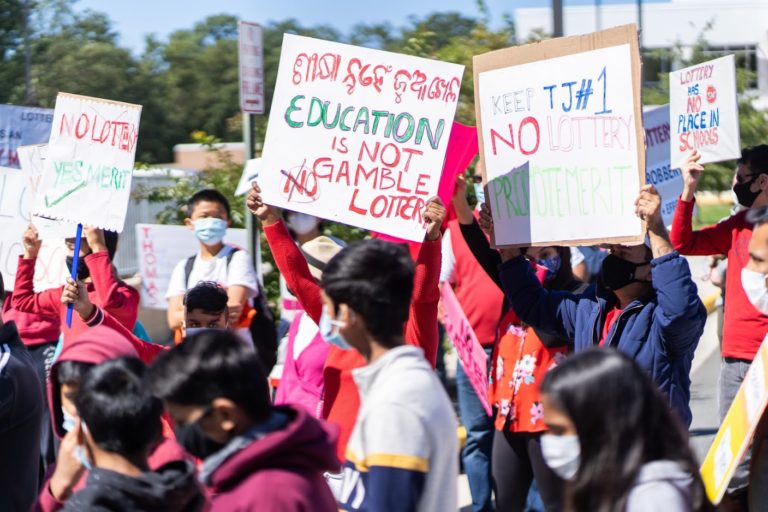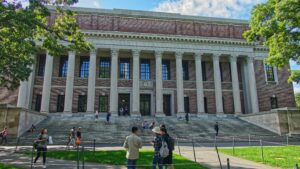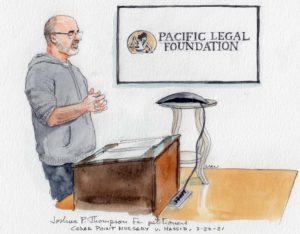The Hill: Virginia court ruling a welcome sign in fight to end race-based school admissions

Will 2022 be the year we finally see an end to discriminatory racial preferences in education? There are welcome signs of change in the air.
In February, parents of students at Thomas Jefferson High School for Science and Technology (TJ) in northern Virginia racked up an important win in a federal lawsuit challenging the school’s admissions policy changes that deliberately reduced the number of Asian American students enrolled at TJ. Meanwhile, racial preferences at the collegiate level are in the spotlight after the Supreme Court agreed to hear a challenge to admissions policies at Harvard University and the University of North Carolina. (Full disclosure: Our public interest law firm, Pacific Legal Foundation, represents the TJ parents and filed friend-of-the-court briefs in the Harvard and UNC cases.)
Taken together, these cases suggest that racial preferences in school admissions may, at last, be ending. For those who care about the value of achievement, merit and equality before the law, that would be a development worth cheering.
The TJ case is particularly reassuring. On Feb. 25, a federal judge ruled that Fairfax County officials violated the law when they revised the objective, achievement-focused admission criteria at the highly competitive public school with the goal of racially balancing the student body. In an effort to increase the numbers of Black and Hispanic students at TJ, school officials openly discriminated against Asian American students. Some officials went so far as to mock the Asian American community’s concerns in private emails and texts that came to light during court proceedings.
With that evidence, Judge Claude Hilton ruled that school officials had violated constitutional guarantees of equal protection. “It is clear that Asian American students are disproportionately harmed by the board’s decision to overhaul TJ admissions,” Hilton wrote in his decision. “Placing the board’s actions in historical context leaves little doubt that its decision to overhaul the TJ admissions process was racially motivated.”
The two challenges before the Supreme Court haven’t been heard, and we’ll likely have to wait until next year for a decision. But a common thread alleged in these cases is the negative effect that racial preferences have on Asian American students, who find their educational opportunities constrained when school officials engage in racial balancing. These challenges offer a compelling illustration of how racial preferences are another form of discrimination, how school officials smuggle them in under cover of “social justice,” and why they need to end once and for all.
Today’s racial preference regimes arise from a deeply misguided 2003 Supreme Court decision, Grutter v. Bollinger, which determined that higher education institutions can use racial preferences to pursue “diversity” in the student body. However, since racial quotas are unconstitutional, some universities achieve their desired racial balance by using an opaque “holistic” admissions process with the purpose and effect of discriminating against qualified Asian American applicants.
While Grutter involved racial preferences in college admissions, the same policies have gradually seeped into lower levels of the education system, as the TJ case shows. We now have seen examples of selective magnet and charter schools moving away from competitive, race-blind standardized tests to guide admissions in favor of more subjective criteria that can cloak racial discrimination under the guise of a superficially “race-blind” admissions process.
We have seen similar tactics in education before. After the Supreme Court rejected efforts by schools to engage in “racial balancing,” schools continued to deprive some individuals of educational opportunities to further equal outcome among racial groups by relabeling the goal as “increasing diversity.” But the Supreme Court, in the Harvard and UNC cases, appears poised to rule that schools cannot increase diversity by means of express racial preferences. As a result, school boards may ensure proportional group representation through invidious proxies for race.
Yet, no matter how circuitous the route to get there, the end of subverting individual opportunity in favor of group outcomes is wrong. This is why the recent challenges against such policies should be welcomed, and why it is so important that the plaintiffs prevail.
Academic officials must stop trying to manipulate racial outcomes by devising new schemes that essentially allow them to discriminate. Instead, for the well-being of all students, schools must end the focus on race in favor of fair, objective admission criteria that center on merit, hard work and individual achievement.
This op-ed was published by The Hill on March 28, 2022.












